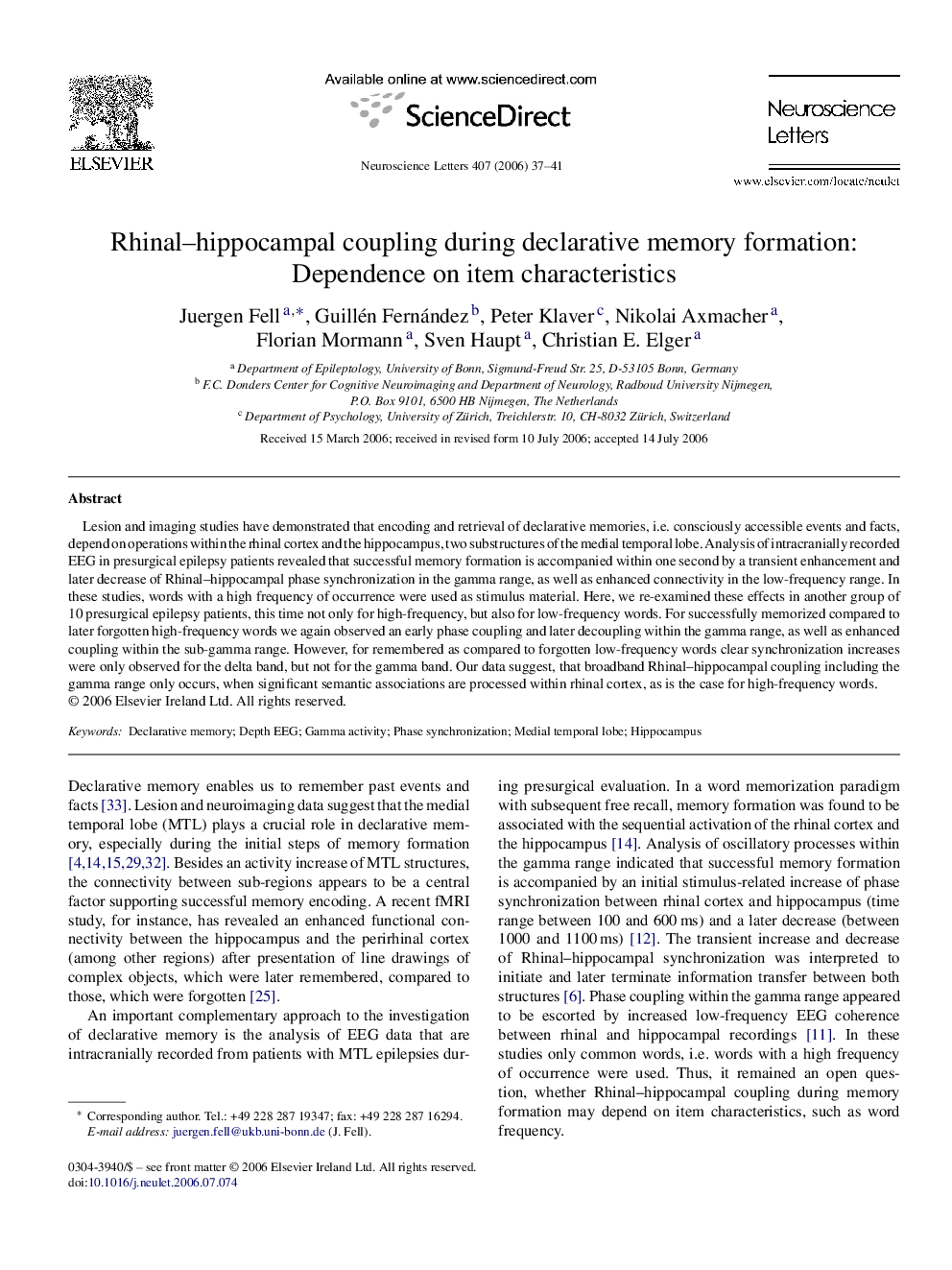| Article ID | Journal | Published Year | Pages | File Type |
|---|---|---|---|---|
| 4350230 | Neuroscience Letters | 2006 | 5 Pages |
Abstract
Lesion and imaging studies have demonstrated that encoding and retrieval of declarative memories, i.e. consciously accessible events and facts, depend on operations within the rhinal cortex and the hippocampus, two substructures of the medial temporal lobe. Analysis of intracranially recorded EEG in presurgical epilepsy patients revealed that successful memory formation is accompanied within one second by a transient enhancement and later decrease of Rhinal-hippocampal phase synchronization in the gamma range, as well as enhanced connectivity in the low-frequency range. In these studies, words with a high frequency of occurrence were used as stimulus material. Here, we re-examined these effects in another group of 10 presurgical epilepsy patients, this time not only for high-frequency, but also for low-frequency words. For successfully memorized compared to later forgotten high-frequency words we again observed an early phase coupling and later decoupling within the gamma range, as well as enhanced coupling within the sub-gamma range. However, for remembered as compared to forgotten low-frequency words clear synchronization increases were only observed for the delta band, but not for the gamma band. Our data suggest, that broadband Rhinal-hippocampal coupling including the gamma range only occurs, when significant semantic associations are processed within rhinal cortex, as is the case for high-frequency words.
Keywords
Related Topics
Life Sciences
Neuroscience
Neuroscience (General)
Authors
Juergen Fell, Guillén Fernández, Peter Klaver, Nikolai Axmacher, Florian Mormann, Sven Haupt, Christian E. Elger,
